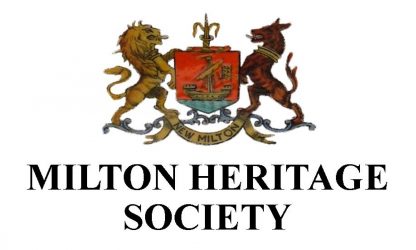Smuggling became a profitable crime when duties were imposed by the English government during the reign of Edward 1 (1239 -1307). Smugglers could always make money by bringing in goods without paying excise duty on them and then selling them on at below the market rate. Along the south coast it was particularly prevalent especially in the Hampshire Dorset area where much of the coastline was unpopulated and many skilled fishermen and merchant seaman could turn their hand to this illicit trade.
It was not just alcohol that was smuggled. Coffee, tea, glassware, paper, silk, velvet, ribbons and lace were also seized by the revenue men.
The smugglers were often supported or left to get on with their trade by the local gentry, merchants and shopkeepers who benefitted by purchasing the contraband at a reduced price. This tacit support often dismayed the revenue men based in the local area.

The Royal Navy were deployed in the 18th and 19th century to bases along the coast to try and prevent the smugglers plying their trade. The first in this area was on the Isle of Wight. In 1822 a Preventative Service Station was set up beside Hurst Castle. In 1823 a further station was set up on the coast at Barton near to Naish and Chewton Bunny.
The smugglers often operated in large, armed gangs that sometimes overpowered the revenue men. Violence and even murders took place, as happened in Chewton in 1780 when Riding Officer John Bursey was murdered late one evening when two men called on him claiming to be able to show him where some contraband was hidden.
From about 1823 the officer in charge at the Hurst Preventative Station was a Lt James Pulling RN. He and his men were active in patrolling the coastline and made several seizures of contraband which were reported in the newspapers of the time.
On the evening of Friday 3rd June 1825 Lt Pulling and four of his men intercepted a gang of about 60 smugglers at an area of the Naish undercliffs known as Lobb’s Hole just to the east of Chewton Bunny. The men were allegedly armed with staves, a pistol and other weapons. A conflict ensued. Shots were fired. James Read from Milton was mortally wounded. At an inquest held in the Wheatsheaf Inn, the jury returned a verdict that Read had been wilfully murdered by the Customs men. Lt James Pulling and Willian Young were sent for trial at the County Assizes in Winchester charged with murder.
The following narrative of events comes from newspaper reports of the subsequent trial in Winchester.
The smugglers were extremely hostile and abusive to the revenue men, challenging them to put down their weapons and fight like men. Lt Pulling stated that he told the smugglers that they would keep their weapons but only use them in self-defence. When Lt Pulling observed one or two smugglers apparently getting something from under their smocks he and his men fired in self-defence. The smugglers then rushed the Customs men who had to fight for their lives in self-defence. Two suspected smugglers who had already been detained were freed by the crowd. When the band of smugglers left the area, the Customs men saw James Read lying on the ground wounded. Lt Pulling instructed his men to help Read.
Witnesses who had been present at the time gave differing reasons for their presence at Lobb’s hole. Some said that they had heard shots and had gone to see what was going on. Others offered no explanation for being there. Several said that as they walked to the cliffs, shots were fired. A number of men came towards them and they asked them what was happening. At this point Lt Pulling and his men ran up to them and asked “what are you up to here?” They replied “We are not up to much”. Lt Pulling then grabbed hold of a young man (Read) and shot him. He then commanded his men to open fire on the group, which they did. It was noted that some witnesses evidence had differed from what they had previously stated to the coroner.
Dr Goddard, the Parish surgeon gave evidence that he attended to James Read on the 4th of June. There was a wound in his belly half an inch above the navel. Dr Goddard removed a lead bullet from the victim’s abdomen. Read told the doctor that he had been shot by a man called Evans from the Preventative Service. Read went on to say that he was paid to go to the beach along with others to bring in contraband that was being unloaded. He was owed thirty shillings for the last seven nights work.
After all the evidence had been heard, the judge summed up the case in minute detail. The jury, after deliberation, found Lt Pulling guilty of manslaughter and acquitted William Young.Pulling was bailed.
Later Lt Pulling’s brother, the Reverend John Pulling produced to the court a letter in the handwriting of one of the jurors. The letter gave instructions to a witness to state on oath that he had seen Lt Pulling fire the fatal shot. It transpired that the jury was made up of sympathisers and friends of the smugglers gang.
Lt Pulling was pardoned following his conviction for manslaughter. He returned to the Preventative Service. The following year he was given command of a ship and posted away from the area. He ended his career as a Captain and was promoted to Rear Admiral in retirement.
Some of the smugglers who were identified at the Lobb’s Hole Incident were give various periods of hard labour and imprisonment.
James Read is buried in St Mary Magdalene Churchyard.
Nick Saunders. Chairman Milton Heritage Society.



